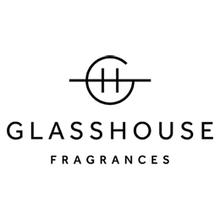For too long, scented candles have been the butt of bad jokes, stereotyped into the same standard of gift as jocks and socks”. Now, the home fragrance market is getting one back on these naysayers, rising above and beyond gift shops to become a dominant player in the beauty and lifestyle biz.
Less than 10 years ago, the home fragrance market was terrible,” says Nicole Eckels, founder and creative director of Sapphire Group, the parent company of GLASSHOUSE FRAGRANCES and CIRCA. When I started Glasshouse [in 2006], the candles that were affordable – I mean less than $40 – didn’t smell at all, and they were all packaged up on the shelf so you couldn’t actually smell them before you bought. It was very clear that [home fragrance] wasn’t something people were making part of their everyday life.”
Kirsten Walker, co-founder of Palm Beach Collection, agrees the market has changed a lot in the three years since the brand launched. There are a lot more players – smaller players, which are good, as well as a lot of higher end brands that are introducing home fragrance to their range.”
And it’s not just the competition that’s changing, with the variety and sophistication of scents maturing as the consumer became savvier. Geoff Ross, chairman of New Zealand-based brand , says the predictable and obvious scents of the past, such as rose and lavender have given way to layered notes and sophisticated scents. There is now a far greater selection of fragrances, including scents that typically haven’t been used in home fragrance.”
Soy vs traditional wax
Like an apostrophe to a subeditor, a wax can divide or unite the opinions of candle makers no matter what the brand. Soy enthusiasts argue this variety of wax is better for the environment, better for our health, and better for the fragrance than their paraffin cousins.
Compared to traditional wax, soy candles burn more slowly and at a cooler temperature,” says Natio’s co-founder Max Ross. The benefits of this are three-fold: the candles burn cleaner, last longer and better distribute fragrance through the home.” It was for this reason that Natio opted for soy wax when it introduced a range of candles to the brand this year.
ECOYA’s Geoff Ross echoes these arguments, claiming that soy wax isn’t just better for the consumer, but better for the fragrance: Our experiments lead us to believe that soy wax delivers a more consistent throw of the fragrance.” He argues that while you may find a paraffin wax candle smells great up close, by the time you get to the other side of the room, you may lose the scent completely.
When re-introducing candles to the brand last month, creative director Leanne Haining opted for soy rather than paraffin wax because of its natural properties. Soy wax does not give off soot or black smoke, so can be safely burnt inside the home without emitting toxic fumes.” Haining articulates a common concern among soy candle makers that paraffin wax emits more carbon dioxide than soy.
Eckels, on the other hand, doesn’t believe any one wax has an advantage over another, arguing that as long as the wax is of high quality, they should deliver comparable results. She says that provided candles are not made with toxic wax and have come from a reputable manufacturer, they won’t be full of chemicals. If you’re using a candle wax that is well-designed and good quality, albeit a soy or paraffin or vegetable or palm wax, the emissions are identical – it’s carbon and it’s water.” Eckels says that choosing a variety of wax all comes down to the personal preference of the consumer, which is why she caters for both – soy wax is used in the Circa Home range, while paraffin wax is used in Glasshouse candles.
Diffusers vs candles
While candles are currently enjoying their moment in the sun (not literally – candles should be kept away from direct sunlight), the reed diffuser is slowly gaining popularity among home fragrance enthusiasts.
Such is the demand for reed diffusers that is including several in its new Jardinière range, launching next month. For such a long time we thought we would avoid this idea, but we were constantly asked by our customers and retailers to come up with a home fragrance range geared around reed diffusers,” says MOR’s co-founder Dianna Burmas. Although there are many diffusers our in the market, we hope to deliver a sense of thoughtful luxury with the introduction of this range. The double-wicked candles are an extension of the diffusers and give an alternative option to adding fragrance to a room.”
In saying that, Ross says candles remain the core of the ECOYA brand. For us, diffusers and room mists make up maybe 30 per cent of total home fragrance sales, but candles remain the core product of the brand,” he notes.
Scent trends
The home fragrance category has its own trends, which aren’t quite as progressive as fine fragrance trends,” says Eckels. That said, it depends on the brand. Glasshouse tries to be very on trend and in line with fine fragrance, whereas Circa Home doesn’t – that’s just about beautiful fragrances that work really well in the home.”
Dora Ngov, associate director of marketing for , says the popularity of different scents is influenced by the season. Musky, woody, comforting fragrances are popular during the cooler months and light, fresh fragrances during spring and summer.” Reflecting the cooler weather of overseas markets over the festive period, is this month launching several limited-edition festive scents: Pine & Eucalyptus, Sweet Almond & Macaroon and Roasted Chestnut.
A common theme among different brands we spoke to was the fact that popular scents vary between countries. There are definite shifts towards favourites from country to country,” says Burmas. With MOR, the Australian market prefers Italian Blood Orange, whereas the USA are huge fans of Kale & Watercress. I always find this olfactory disparity quite fascinating.”
Ross also found this to be the case when ECOYA was developing its latest Botanicals range in conjunction with US department store Bloomingdale’s. We talked with them about the fragrances they were after and the type of layering of fragrances consumers there were after,” he says. Some of the scents – Desert Oak and Ribery is one of them – I would describe as quite an American fragrance as it’s quite sweet.”
What’s to come?
Along with an opinion on wax varieties, every home fragrance brand we spoke to was willing to share their plans for the future of this exciting market. Palm Beach Collection is looking at rebranding in the coming months, while Urban Rituelle is planning to introduce new fragrances to its Scented Offerings down the track and Molton Brown continues to uncover new scents. Eckelecks talks passionately about turning Circa Home into an all-encompassing home lifestyle brand, while the opportunities for Glasshouse, she says, are endless. ECOYA will continue to establish itself as a leader in the Australian market, and will work to grow its brand presence in Asia.
So if you still think a scented candle is a daggy gift to be relegated to a bottom draw, you’d be one of few. A quiet achiever no more, this category is only going to get bigger and better.




